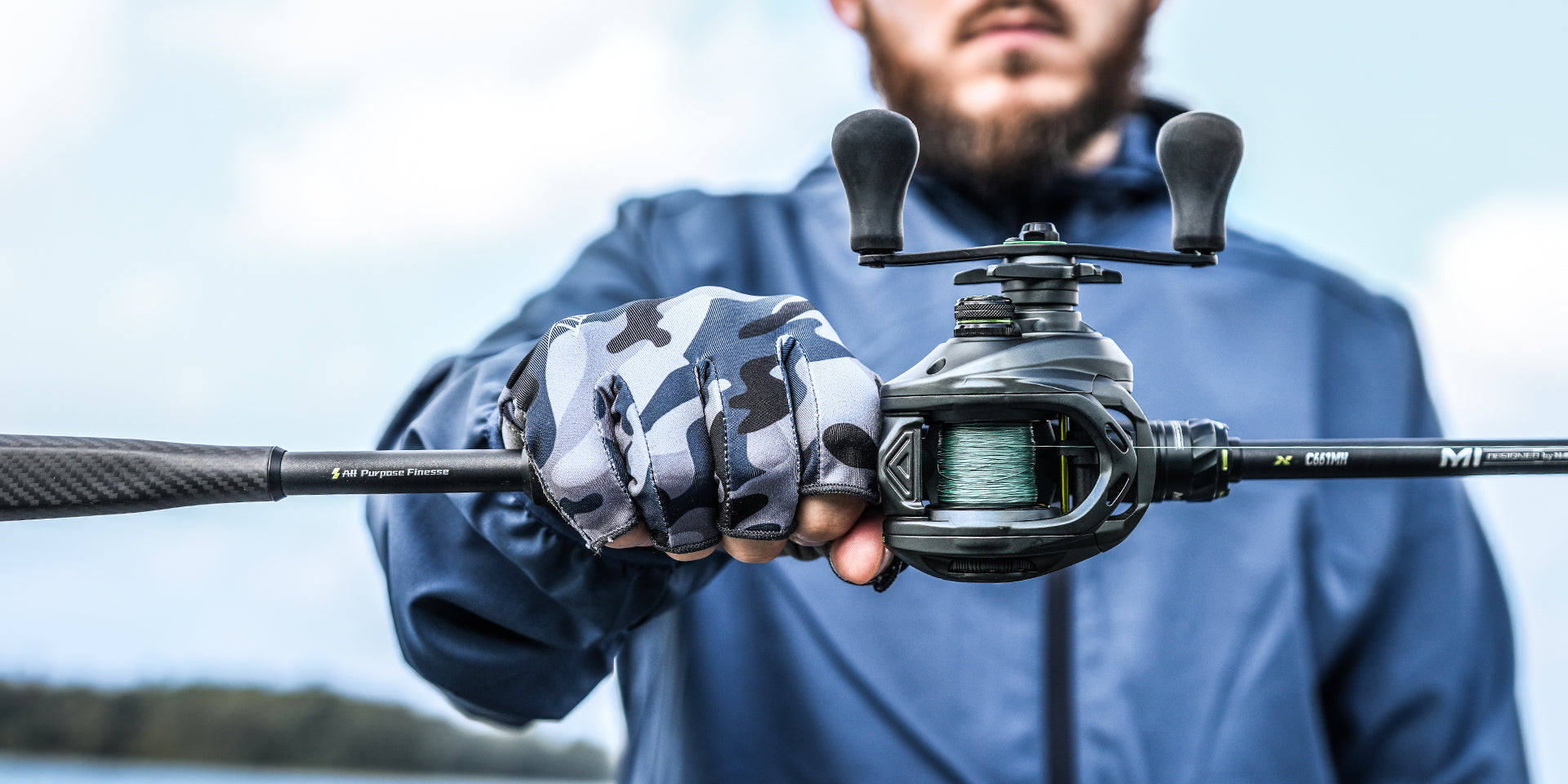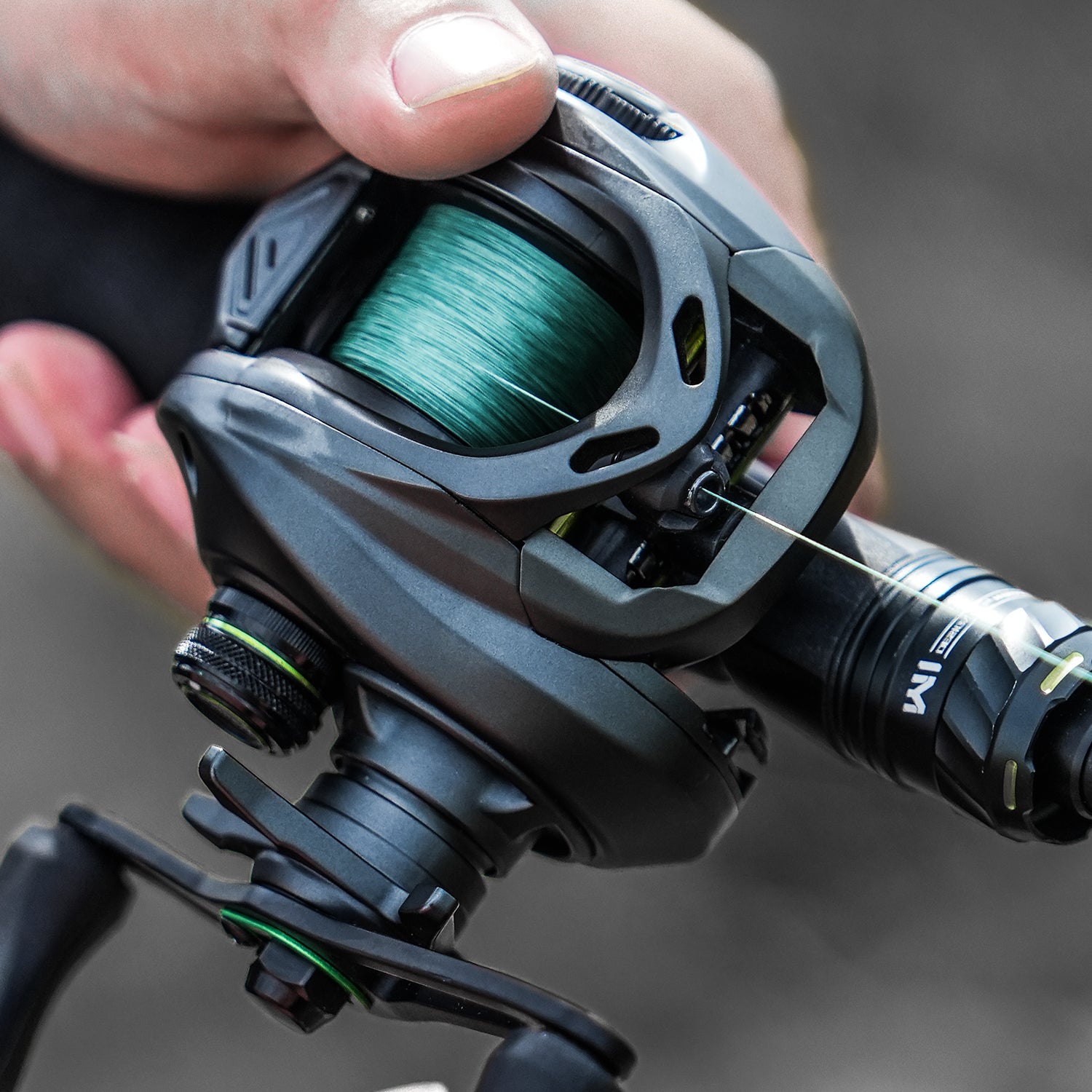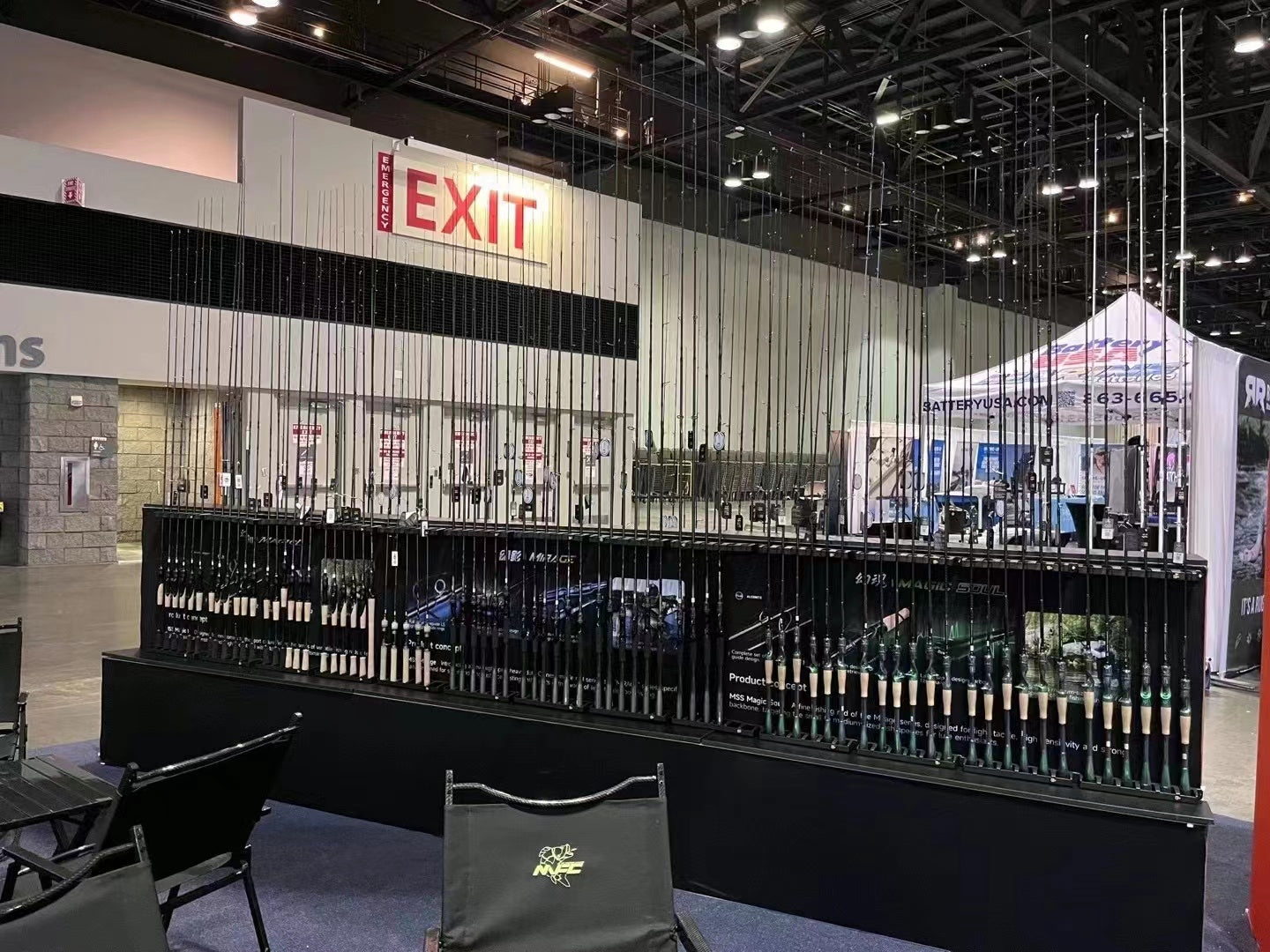Fishing rods are the most important tool for connecting anglers to their aquatic prey. They translate small moves and give anglers the leverage they need to catch big fish. If you’re casting from the shore, a boat, or a pier, the difference between spinning and casting poles makes a big difference in how well you catch fish. These two main types of rods are better in different situations because they are made with features that are best for different types of fishing, target species, and skill levels of anglers.

Spinning Rod vs Casting Rod Key Differences
| Feature | Spinning Rods | Casting Rods |
|---|---|---|
| Reel Position | Underneath the rod | On top of the rod |
| Guide Design | Larger guides near reel | Smaller, evenly spaced guides |
| User-Friendliness | Beginner-friendly | Steeper learning curve |
| Casting Precision | Moderate accuracy | Superior precision |
| Power Range | Light to medium applications | Medium to heavy applications |
| Ideal Applications | Smaller species, frequent casting | Larger fish, precision targeting |
| Common Challenges | Limited power for big fish | Risk of backlash/tangles |
| Investment Level | More economical options | Generally higher price point |
Understanding these key differences is essential when selecting your first fishing rod, as beginners typically find spinning rods more approachable while developing their angling skills.
Spinning Rod Design and Construction
What Makes Spinning Rods Unique
The unique shape of spinning rods is based on the reel being placed under the rod. When the rod is under pressure, the spine curls downward. This makes a natural bend that helps absorb shock when fighting fish.
Guide placement stands out, with bigger guides near the reel and smaller ones getting smaller as you move closer to the tip. This set-up works with the way line spirals as it comes off of a spinning reel, which lowers friction and makes casting easier.
The handle section is usually longer than on casting models so that two-handed casting methods can be done with more leverage. For long fishing sessions, many spinning rods have cork or EVA foam grips that are shaped to fit easily in different hand positions.

Why Spinning Rods Excel for Many Anglers
Spinning rods excel in multiple fishing scenarios due to their inherent strengths:
- Intuitive Learning Curve: These rods are great for newbies and occasional fishermen because they naturally cast.
- Versatile Performance: They can handle light to medium-weight lures well, so you can use them to catch a lot of different species.
- Forgiving Operation: The open-faced reel design almost completely gets rid of the backlash problems that are common with casting reels.
- Access to the Market: Anglers can find good choices at a range of price points, from cheap models to high-end ones.
One of the most significant benefits of spinning gear is its ability to cast lightweight lures that casting rods struggle with. The spinning mechanism lets the line flow easily off the spool, so you don’t need the weight of a heavier lure to pull the line during the cast.
Spinning Rod Limitations to Consider
Even though they can be used for many things, spinning rods have clear limits. There are some power limits built into their design, which makes them less useful for fighting big fish or successfully casting heavy lures. During a long fishing session, the line twist that usually happens with spinning reels can also be a problem.
Another thing to think about is accuracy. Even though spinning setups can be pretty accurate, casting rods usually can’t beat the exact accuracy that spinning setups offer, especially at longer distances where line control gets harder.
Despite these limitations, the combination of simplicity, versatility and affordability makes spinning rod and reel combos the most recommended option for those new to fishing.
Casting Rod Features and Engineering
How Casting Rods Differ from Spinning Models
Casting rods are fundamentally different from spinning rods in a number of ways. The most visible is putting the reel on top of the rod, which lines up the line with the guides on the rod. These guides look much smaller than the others, and the width between them is the same all along the blank.
A trigger grip is a small finger hold that is usually built into casting rods. It is located right in front of the reel seat. This feature gives anglers better control during casts and fights with bigger fish, so they can keep a firm grip with less effort.
In casting models, the rod’s action (how fast it bends when pressure is put on it) is often faster. This makes the backbone stiffer, which gives the model more strength. This choice about the design immediately leads to longer casts with heavier fishing lures and stronger hook-setting power.

When Casting Rods Outperform Spinning Models
When you need skill, power, or a mix of the two, casting rods are the best choice:
- Precision aiming is possible even at very long distances, so anglers can put lures right where fish are hiding, like under trees that hang over, next to structures, or in tight spots in the vegetation.
- When you use the right techniques, the straight line alignment lowers friction during casts, which means you can go farther. With very little work, experienced anglers can get a very long casting range.
- Power transmission works really well with casting sets. The shape of the rod effectively transfers energy during hooksets, giving you the support you need to drive hooks into the tough mouths of fish like bass, pike, and muskie.
There are many types of specialized casting rods that allow anglers to choose the right tools for each method, such as flipping heavy cover or throwing crankbaits over long distances.
Casting Rod Challenges for Anglers
Even though casting rods are better for performance, they can be hard to use, especially for anglers who aren’t very good at it. By far the most annoying is backlash, which happens when the spool on a baitcasting reel turns faster than the line leaves during a cast, causing tangles called “bird’s nests.”
The starting cost is usually higher than for similar spinning setups. This is because the rod and good fishing reels that help prevent backlash cost more. Also, casting sets don’t work well with light lures, which limits how they can be used in some fishing situations.
Mastering the right way to cast takes a lot of practice, which can be too much for some casual anglers. Conditions of the weather, especially wind, can make it harder to cast.
Best Fishing Situations for Each Rod Type
When to Use Spinning Rods for Best Results
Spinning equipment proves ideal in numerous fishing situations:
- Light tackle applications shine with spinning gear, particularly when targeting species like trout, panfish, or smaller bass that strike subtle presentations. The ability to cast lightweight lures makes spinning rods the clear choice when fish prefer finesse offerings.
- Shore fishing locations often demand frequent casting and retrieval cycles. The user-friendly nature of spinning gear reduces fatigue during these extended sessions.
- Windy conditions challenge all anglers, but spinning setups typically provide more forgiving performance when casting into or across gusting winds.
Novice anglers almost universally benefit from starting with spinning gear. The intuitive casting motion and reduced line management issues allow beginners to focus on fundamentals rather than equipment troubleshooting.
Fishing Scenarios Where Casting Rods Dominate
Casting rods demonstrate their value in specialized fishing environments:
- Heavy cover fishing necessitates the power and control that casting rods provide. When targeting species around thick vegetation, submerged timber, or other structure, the superior hookset power and precision placement capabilities become invaluable advantages.
- Trophy hunting scenarios call for robust equipment. When targeting larger specimens of species like bass, pike, muskie, or stripers, casting gear delivers the backbone needed to control powerful fish and prevent break-offs.
- Professional tournament anglers predominantly select casting equipment for competitive events. The enhanced accuracy allows them to repeatedly target productive areas with minimal variance between casts.
- Technical presentations like pitching, flipping, or skipping lures under docks demand the control that casting rods provide. These specialized techniques rely on the rod’s design to execute effectively.
Choosing Between Spinning Rods and Casting Rods
How to Match Rod Type to Your Fishing Style
When choosing between spinning and casting equipment, here are some useful things to keep in mind:
1. Level of Experience: Be honest about how comfortable you are with different types of rods. For some situations, even expert anglers like spinning gear better.
2. Target Species: Find out about the average sizes and environments of your target species to figure out what kind of rod will work best for those situations.
3. Common Techniques: Different ways of fishing call for different types of rods. Do some study to find the right one for you.
4. Think about the budget: There are good choices for both types of rods at different price points, but most entry-level casting setups need a bigger investment to work well.
Why Many Anglers Own Both Spinning and Casting Rods
A lot of dedicated anglers end up using a hybrid approach, which means they keep both types of rods in their arsenal. With this method, you can choose the best tool for each fishing situation:
● A medium-action spinning rod serves as a versatile option for general applications
● A medium-heavy casting rod provides the power needed for larger targets
● Specialty rods for particular techniques round out a comprehensive collection
This strategic method maximizes success in a wide range of fishing conditions without requiring a lot of money to be spent on gear.

Elevate Your Angling by Selecting the Perfect Rod
The argument over whether to use a spinning rod or a casting rod comes down to choosing the right tool for the job. Both types have their own unique benefits in certain situations, and their engineering is the result of decades of work perfecting them for specific fishing uses. When choosing your next fishing rod, think about your fishing goals, the places you like to fish, and your own personal tastes. The perfect choice strikes the perfect mix between performance and comfort, turning regular fishing trips into unforgettable water adventures.







